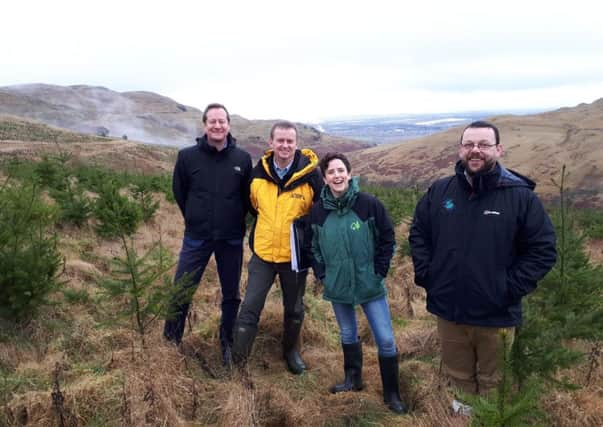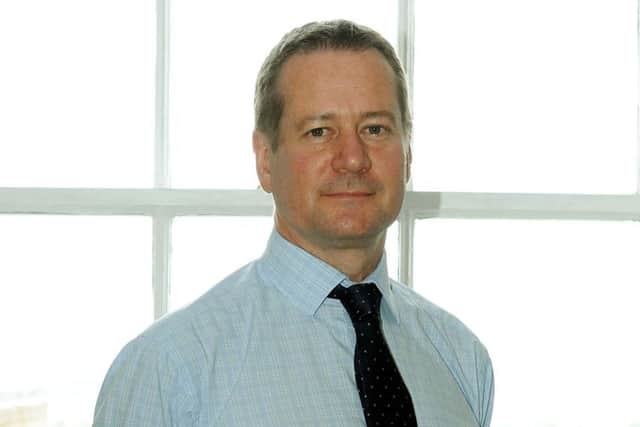Stuart Goodall: Carbon capture technology already exists – it’s called planting trees


I was privileged to speak at the event, Forestry as a Climate Change Solution – and very happy that Mairi Gougeon made the link between tree planting, wood use and climate change very explicitly.
We’ve heard a lot about the climate emergency recently but while others might be accused of jumping on the bandwagon, Scotland has very much led the way and continues to do so.
Advertisement
Hide AdAdvertisement
Hide AdIn 2009, Scotland became the first country to introduce legally binding annual targets to reduce emissions, with the Scottish Parliament’s Climate Change Act. Last month, it responded to advice from the UK Committee on Climate Change (CCC) by setting a 2045 target for net zero emissions.


Unlike the UK Government, Scotland is joining up policy and understands that more tree planting and greater wood use is crucial to mitigating climate change impacts. As the CCC has said in successive reports, tackling climate change is no longer just about reducing emissions, but also removing atmospheric carbon.
Planting and growing trees is one of the most effective ways of capturing carbon in this way, while wood products store carbon. When we say ‘carbon capture and storage’, let’s think about a proven, cost-effective solution – planting trees and using wood – and not expensive and unproven technologies involving pumping carbon under the sea.
Mairi Gougeon also stressed in her speech in Ireland that forestry will be further integrated into land-use policy and wider climate change action, another example of practical, joined-up action and not climate grandstanding.
The key to success is partnership and breaking down traditional barriers. For example, we no longer talk about forestry or farming, but how the two can co-exist most effectively to deliver for our economy, environment and communities.
Scotland is expected to announce this week that it has met its annual new woodland creation target of 10,000 hectares – the first time this generation.
This has not been through a few huge planting schemes, but largely by small-scale woodland creation by farmers to provide shelter for animals and offer a long-term income stream to diversify and strengthen their business. There is a growing realisation in Scotland that tree planting is an opportunity for farmers, not a threat; other parts of the UK still need to understand this.
By planting more trees, we do not just help tackle climate change, but we deliver a long-term timber supply to make the wood products we take for granted. At the moment, the UK imports 80 per cent of the timber it uses to make these products – an unacceptably high figure, second only to China. We cannot talk up our climate change credentials and export our timber footprint to this extent.
Advertisement
Hide AdAdvertisement
Hide AdTo address this, Confor has created ambitious, but realistic targets for new planting across the UK with our Think Global, Plant Local campaign.
We believe 40,000 hectares of new woodland planted annually across the UK by 2030 is achievable, with 18,000 hectares in Scotland. The official Scottish Government target is 15,000 hectares by 2025 and we were delighted when Fergus Ewing, Cabinet Secretary for Rural Economy welcomed our proposal to nudge upwards to 2030. Commercial forestry – to make those wood products we all use – is a key component of new planting, if we are to avoid exporting our forest footprint.
The balance between ancient woodland and delivering a new generation of large productive forests was articulated recently by Sir David Attenborough. He said we had to protect and manage our ancient forests but also create large new productive forests to tackle climate change and supply the wood we need for our low-carbon future.
This discussion cannot be about one type of tree or another; we need a mixture, a balance of species. Productive forestry is often criticised (lazily) for failing to deliver for biodiversity yet red squirrels and white-tailed sea eagles thrive in conifer forests and Confor is embarking on a new piece of work to show productive forestry can deliver for wildlife.
Forestry is a unique industry, where additional economic activity goes hand in hand with environmental benefit.
So when Mairi Gougeon asks us all to love trees more, let’s love them all equally – and Think Global, Plant Local.
Stuart Goodall is chief executive of Confor: promoting forestry and wood.